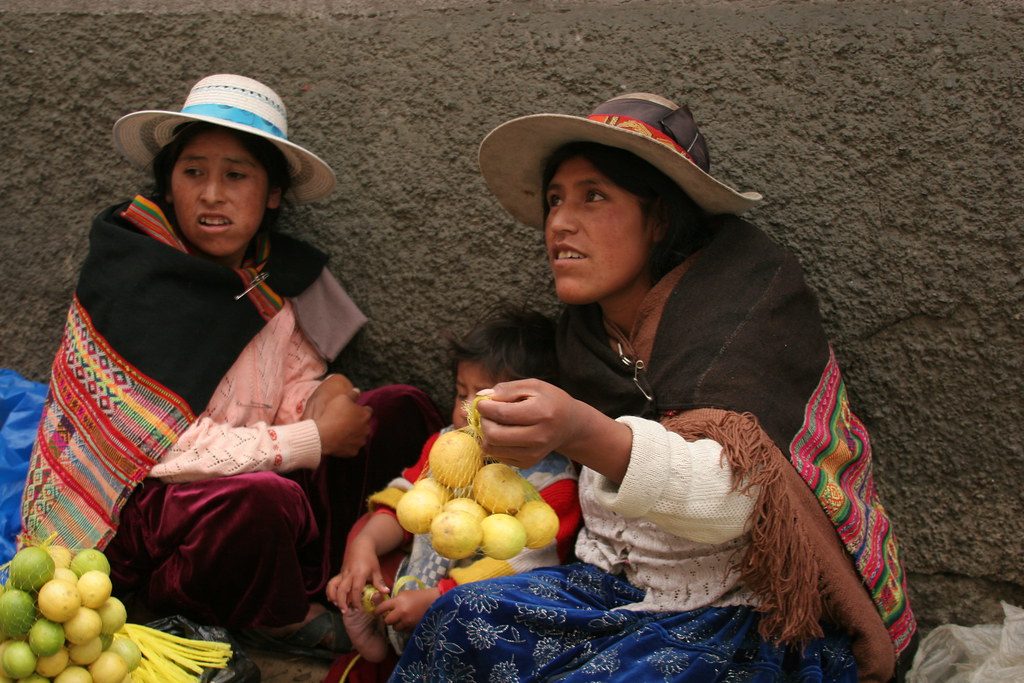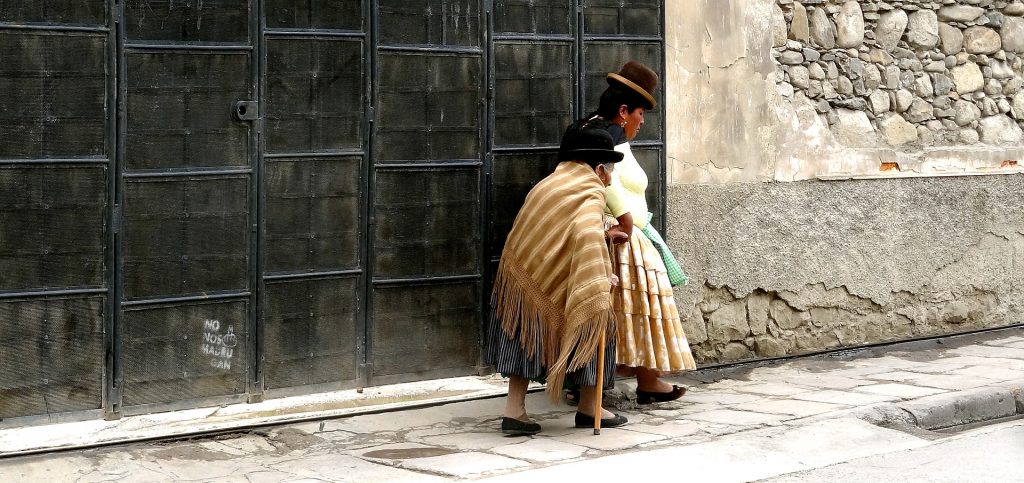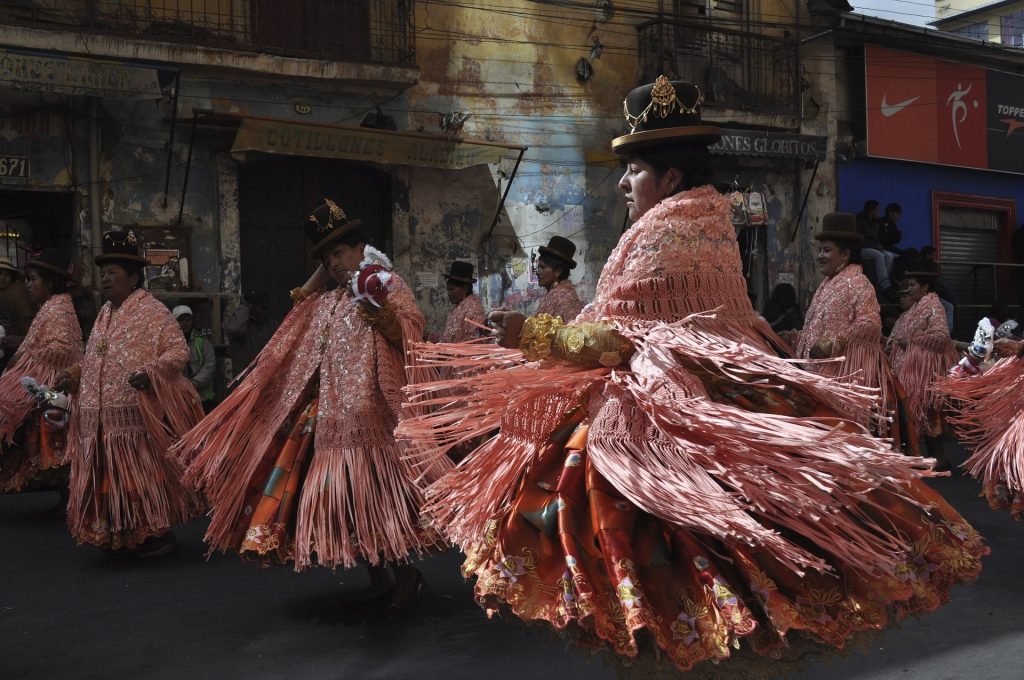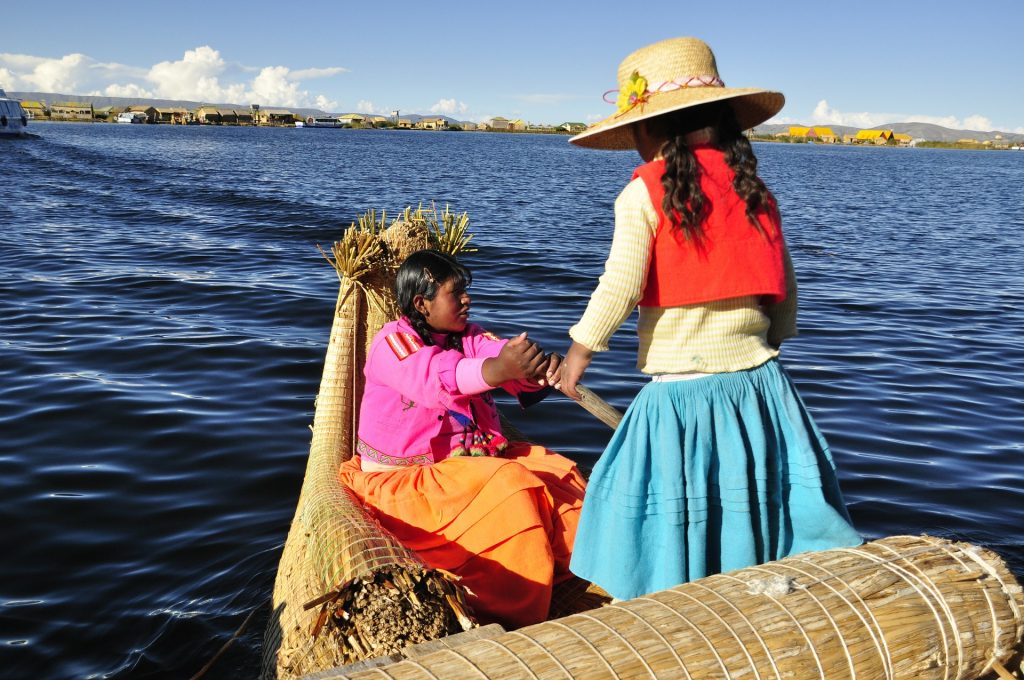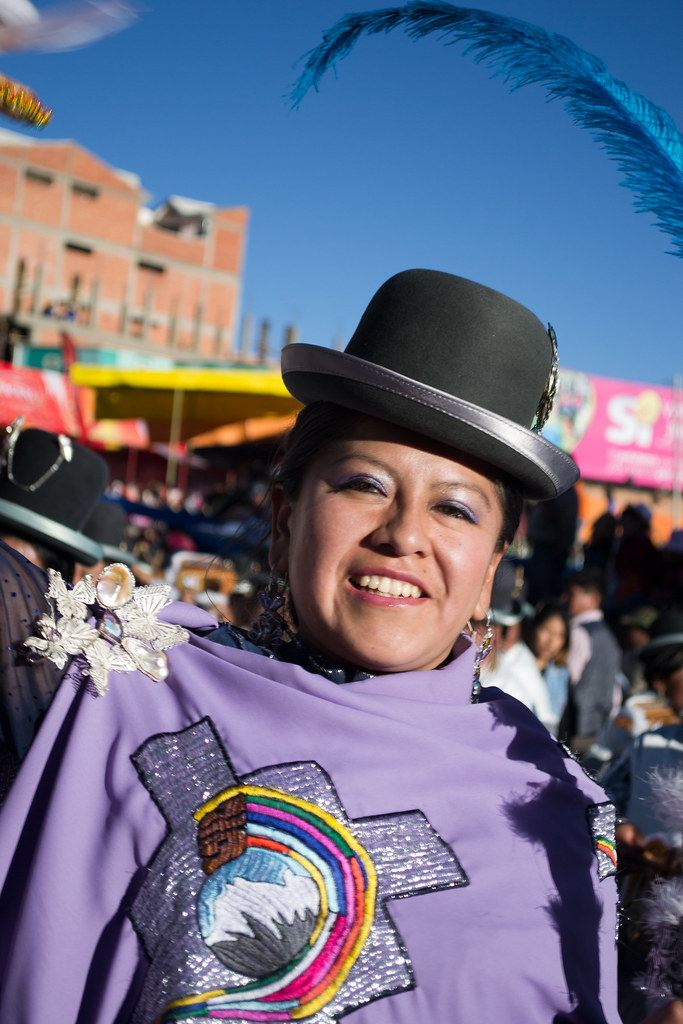Bolivia’s Las Cholitas
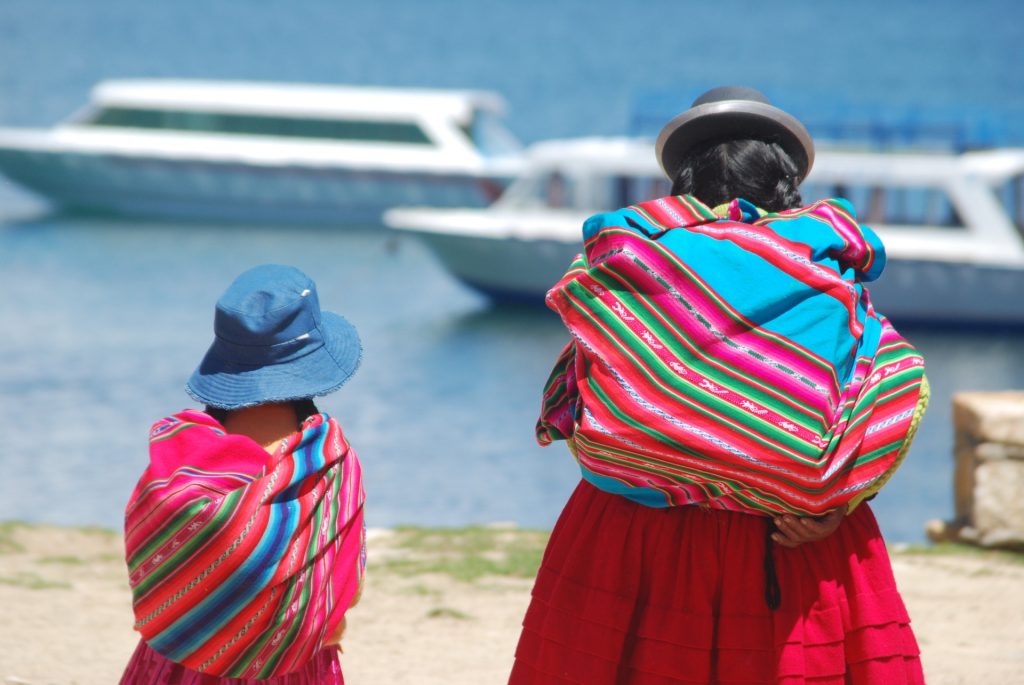
The cholita indigenous women from Bolivia’s countryside, are an indomitable symbol of resilience. In a country ravaged by colonial greed, ransacked resources, and periods of crippling poverty, the Bolivian people are no stranger to adversity. But as recently as ten years ago, the cholita faced the greatest hardships, because they were deemed inferior members of Bolivian society. Originally defined as women from the pueblos living in the cities, they have always been easily distinguishable by their unique style of cholita dress and their indigenous features. Barred from taking public transport, taxis, eating in restaurants, and from walking freely in ‘respectable’ public spaces, they were routinely looked down upon by city dwellers. Over the last decade, they have reclaimed their power and the cholitas have been solidified as a symbol of strength and perseverance.
In the steeply winding streets of the Bolivian pueblo, you’ll never fail to spot the Bolivian cholita. With a teetering tower of fabric-wrapped goods stacked on her back, she is bowed but yet unbroken. With eyes peeping out of tightly swaddled bundles strapped to her front, she remains unperturbed, as she carries out her tasks at her market stall. She jokes with her neighboring fruit sellers, sitting on high stacks of woven cloth to peer over the piles of produce. Against the rust-colored muddy streets of Potosí, the bright white walls of central Sucre or the buzz of Laz Paz traffic, the colorful figures are unmissable.
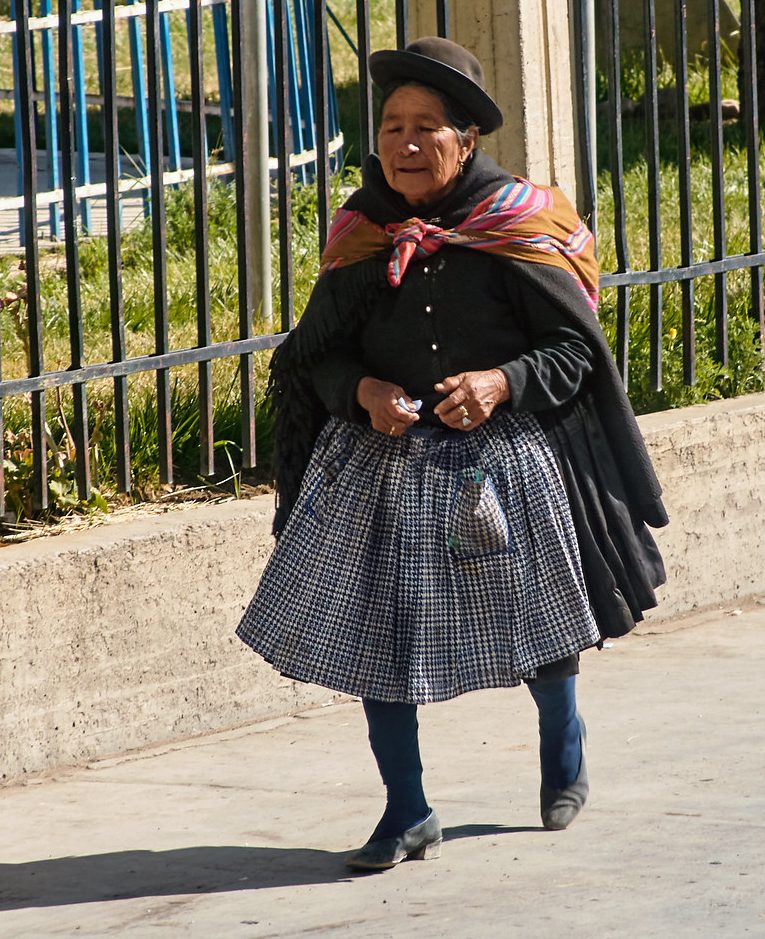
An Indigenous Uniform Created by Colonizers
With voluminous layered skirts puffing out in colorful rings and jaunty bowler hats, the cholita’s attire is an iconic feature of the Bolivian landscape. But the hats that sit atop their tightly tied braids are a remnant of Bolivia’s days as a hub of new world commerce, a country that attracted many traders from Europe and the United States. The traders brought the hats from Manchester, England intending to sell them to Bolivian men and traders living in mining towns. Finding they were too small to fit the heads of the local men; the traders convinced the Bolivian women that these hats were all the rage amongst the fashionable women in London. The accessory has since become a distinctly cholita style and play an important role in cholita culture because they signify social status: should she place the hat on the side of her head, she is single or widowed. In the middle of the head – married. Hanging off the back of the head – it’s complicated. Despite making it their own, the women have suffered from this foreign influence: the hats cost the women years of wages, with La Paz milliners charging up to £450 per hat.
The flourished skirts harbor their own darker history. Spanish conquistadors colonized Bolivia and enslaved the indigenous population, a practice that prospered during the golden age of the Potosían silver trade. The colonizers crippled the country’s progress, pillaged much of Bolivia’s rich natural resources, and demonized the people native to the land. Colorful and whimsical as the cholitas’ skirts appear, they were initially introduced as uniforms for the poorest women in Bolivia, intended to mimic the outfits worn by slaves in the Basque country. Again, the cholitas have made this look their own. Few recall that they were once reminiscent more of the slaves of San Sabastián than of the traditional attire of the Quechua or Aymara women and that they were forced to adjust their appearance because of the Spaniards desire to ‘rein in their subversive airs.’
Exploitation Through Wrestling Matches
This lingering fear of subversion and rebellion has birthed a new industry, ripe for exploiting the cholitas once again: the famous cholita wrestling matches. Tourists cram into rickety minibusses hauling them en masse to Sunday night wrestling matches. Two women in traditional dress, part of a group called ‘The Flying Cholitas,’ fight it out in a traditional wrestling match in El Alto. For many, many years, these were run by manipulative promoters, advertising the matches to foreigners as an amusing sideshow. They pocketed the vast majority of the takings earned by the women.
In recent years, the women have formed their own association, the Association of Fighting Cholitas. They have elevated the event from a novelty, to one emphasizing that they are athletes competing in a professional capacity and that they are powerful women worthy of recognition. The profits go to the cholitas instead of the promotors. Those events, organized by the cholitas, celebrate the cholitas.
Cholitas Making Waves
Life has been steadily improving for these Andean women in other ways too. Public schools have introduced mandatory education in indigenous languages, either Quechua or Aymara, opening up new opportunities for indigenous teachers in the big cities and emphasizing the importance of indigenous identities in Bolivia. Increasing numbers of cholitas are making waves in Bolivia’s political landscape too, serving as congresswomen and helping to improve civil rights for women and indigenous communities.
Battling generations of degradation and discrimination, these powerful women have built themselves a platform for reform. From the poorest women digging through the dirt at the foot of the Cerro Rico mountain for scraps of treasure from the old silver mines to the cholita fashionistas making a name for themselves by organizing Bolivian fashion shows, the advancement of Bolivian women is undeniable. In a land that has pushed them down for hundreds of years, they continue to stand proud.
Book Now to Stay in La Paz, Bolivia
Search, compare and book hotels & rentals at the best prices that are sourced from a variety of platforms including Booking.com, Hotels.com, Expedia, Vrbo and more. You can move the map to search for accommodations in other areas and also use the filter to find restaurants, purchase tickets for tours and attractions and locate points of interest!


Sara Jane “SJ” Armstrong is a travel writer and blogger from London, currently residing in Melbourne. Having backpacked since toddlerhood, her main focus is on Latin American and Middle Eastern travel.
